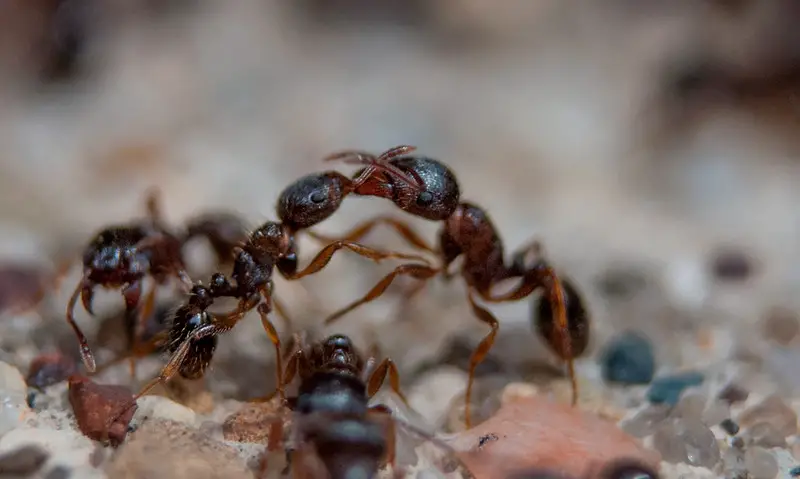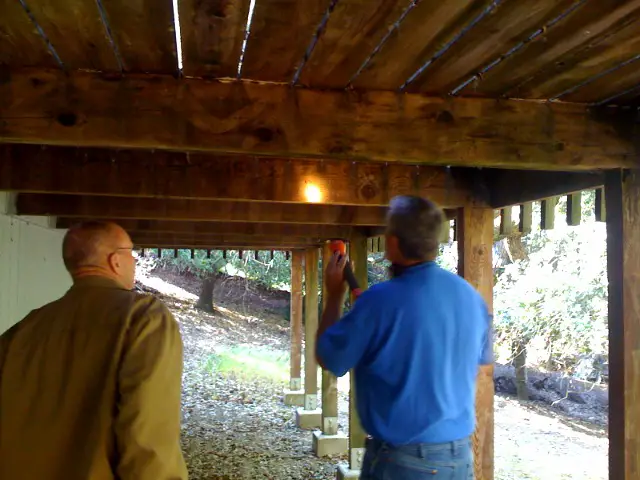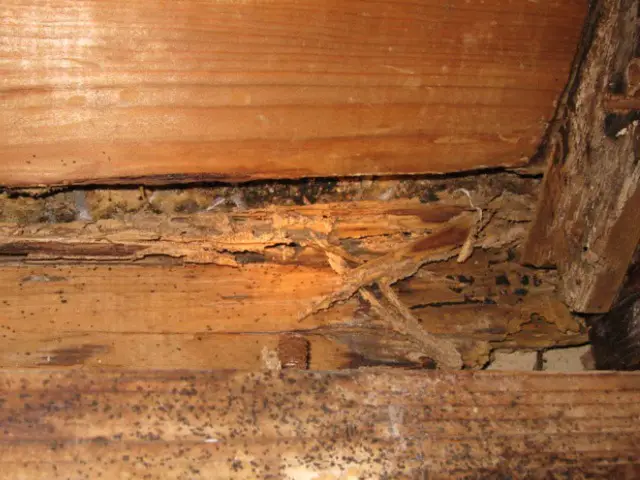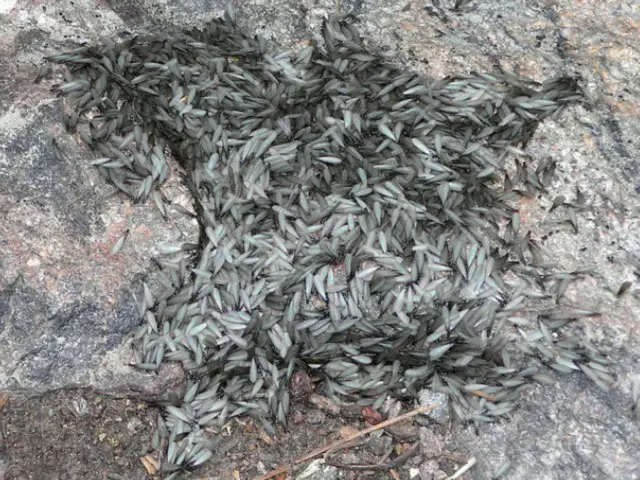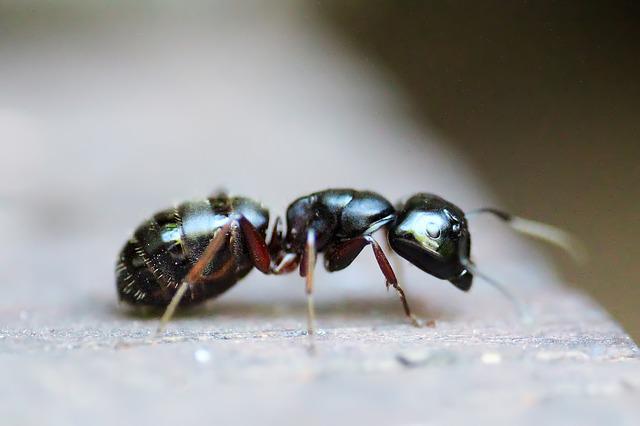Baits are effective against social insects such as ants because these ants collect food and share it with their colony. Because of this food-sharing ability, insecticide bait is proven to be effective for controlling ants, so the ant carrying it does not die before it returns to the colony. Furthermore, the hallucination effect will cause the ants to kill each other even though the insecticide bait poison doesn’t get them.
How to kill ants in the yard?
By the slower method of destroying the colony, insecticide bait offers a more permanent ant solution than broadcast applications of spray pesticides, which basically repels pests from a structure.
For best results, follow the recommendations as below:
- Remove competing food sources from ant-infested areas. Baits are less effective in areas with many food sources that serve as a rival food source like:
- Dumpsters, chicken houses, pet’s feeding dishes, trash cans, etc.
- Another type of bait competition comes from aphids and scale insects producing honeydew outside.
- If you do notice mold-like substance on your perimeter plants (treat the ornamentals with an appropriately labeled ant control product.
- Use fresh bait. Once the container is opened, it needs to be used within six months to 1 year. If not, the carpenter ant bait becomes stale and unacceptable to the ants, not having a good acceptance.
- Use of insecticide sprays or dusts before or during baiting treatment is forbidden. Contact or a residual insecticide applied prior to treatment or during the baiting treatments sets a hostile environment, suppressing foraging activity from the foraging ants.
- Baits are most effective when temperatures are above 21C or 70F. If daytime temperatures are in the 90’s a nighttime application of ant bait may be more effective. Placing a small amount of bait close to a mound will determine if ants are there, ready to forage for food within 30 minutes if conditions are ideal.
- Do not use baits on wet surfaces such as dew-covered grass or uncovered outdoor areas. This will make the bait less attractive to the ants — remember, the ants treat the baits as a potential food source.
- Broadcasting baits is generally more effective in reducing fire ant populations than mound treatments.
- Broadcasting is less labor-intensive and more economical than individual mound treatments in areas with more than 40 mounds per acre.
- Be very thorough when baiting. Try to locate possible entry points, look for their trails, placing bait in those areas. Don’t forget about baiting the outside as well.
How to get rid of ants in grass naturally?
To get rid of ants outside or in grass naturally, surround the ant mound with cayenne pepper or chili. You can mix coffee grounds with cayenne or chili pepper to make an effective and repellent. You can pour the mixture inside the ant mound to see if it works. Experiment with this to see if it really works for getting rid of ants in grass, as some people claim. If you have pets at the house, make sure they don’t get access to this natural ant repellent.
Related posts:
- How To Get Rid Of Ants In Pennsylvania?
- How To Get Rid Of Ants in California?
- How To Get Rid Of Ants in New York?
- How To Get Rid Of Ants In Illinois?
- How To Get Rid Of Ants in Florida?
- How To Get Rid Of Ants in Texas?
- How To Get Rid Of Ants In Ohio?
- How To Get Rid Of Ants In Michigan?
- How To Get Rid Of Ants In Georgia?
- How To Get Rid Of Ants In North Carolina?
- Do Sugar Ants Bite?
Diatomaceous Earth is a food-grade ant repellent. This material is the ground fossilized skeletons of microscopic algae or diatoms. It’s powerful enough to kill ants in grass naturally. Moreover, it kills the ants when they walk across it. What’s more, is that Diatomaceous Earth won’t harm people. Some people actually eat it as a source of silica for treating constipation, high cholesterol levels and improving skin and bone health.
Besides eliminating yard ants, plants benefit from nutrients. Since Diatomaceous Earth is mineral-based, it contains calcium, potassium, magnesium, nutrients which will nourish your lawn.
If you’re wondering how to kill ants in the yard naturally, Diatomaceous Earth is an excellent, low-cost ant control solution that’s safe for your kids, pets and plants.
You can sprinkle food-grade Diatomaceous Earth around anthills and on ant trails. Alternatively, you can pour it inside the ant mound. Diatomaceous Earth particles penetrate through an ant’s waxy layer, killing them by absorbing their moisture. The process may take several days, but silica dehydrates ants. Diatomaceous Earth is also effective for removing pests like fleas, cockroaches, and bedbugs. This is a simple yet effective method to get rid of anthills.
Only the food-grade Diatomaceous Earth is for human consumption. Only use this type of DE around children and pets.
You can kill ants in the yard with white vinegar. All you need to do is to mix equal parts of water with white vinegar. And spray the vinegar mixture on ant-infested areas in the yard. Unfortunately, acidity is deadly to ants’ bodies. As a result, the acid in vinegar kills ants. One other ant control method is to pour the vinegar-water mixture inside the anthill.
Vinegar is a safe, non-toxic alternative to killing ants. Unfortunately, vinegar may kill vegetation in the yard. In addition, the acidity of vinegar can damage your plant’s topsoil so if you use this pest control method, do so cautiously.
Soap and water is a classic, natural method to get rid of ants. There are several recipes to make soapy water. Some recipes call for apple cider vinegar, baking soda, and peppermint oil. You’re more than welcome to explore the benefits of these ingredients. But eco-friendly soap and tap water do the job fine.
To create 2% ant control spray:
Mix 1 heaping tablespoon of soap to 1 quart of water. After you combine the mixture, funnel the liquid into a spray bottle. Liberally spray the soapy water on any visible ant trails, plants, or around the ant colony. The mixture breaks down ants’ natural resistance to water. As a result, the liquid gets rid of ants. Soapy water also eliminates the chemical trail used to communicate with other ants.
If you want to eliminate anthills, pour the soapy water inside the ant mound to kill ants.
Cinnamon is a simple pantry item to help you eliminate ants. Unfortunately, excessive amounts of cinnamon can also kill plants, not just ants in the yard. If you want to make this natural pest repellent, you should mix ten drops of cinnamon oil in 12 ounces of tap water. Cinnamon oil is not a requirement for this ant repellent. You can also use cloves or ground cinnamon. But if you want the most effective repellent, it’s best to use cinnamon oil.
You can get rid of ants by sprinkling baby powder where there is an ant infestation. Ants breathe through tiny spiracles. The spiracles are the pores located on the ant’s exoskeleton called. The fine particles in baby powder easily block ants’ spiracles, killing ants in the process. Clogged spiracles deprive ants of oxygen.
Homeowners can also eliminate ants in their yard by sprinkling baking soda – not baking powder – where they see ant activity. The good news about getting rid of ants in the yard using baby powder or baking soda is that you pick up either of these pantry items during your next grocery shopping.
One of the most common pantry items, salt, is an effective ant control item. Salt eliminates ants by dehydrating them. More specifically, salt dehydrates the exoskeleton of ants, killing the ants in the process. A homeowner can easily make a potent mixture of water and salt on ant trails. The same salt mixture can help you get rid of ants in the yard by pouring it in ant holes.
Avoid spraying large amounts of your homemade saltwater solution. An excess of saltwater can kill vegetation and plants.
Imported Red Fire Ants – Their Threat To Humans Continues
If you have been in Texas, or almost anywhere in the south for more than twenty-four hours, you have no doubt encountered or at least seen evidence of the Red Imported Fire Ant.
Fire ants were accidentally introduced into Mobile, Alabama, from South America more than sixty years ago. They now infest more than 260 million acres. They reached Texas in the early ’50s, spread throughout the eastern two-thirds of the state, and moved on. Thousands of reproductive females are produced per colony, and when mated, they begin a new colony wherever they land. This presents a major control problem as well as a quarantine problem.
Fire ants are aggressive and will attack anything that goes near them. They repeatedly sting, seemingly on signal and all at the same time. Once stung, a white pustule forms on the skin, as seen in the picture below. The stings are not normally life-threatening but the pustules, once broken, are easily infected and leave permanent scars. Some people are sensitive or allergic to the sting. In those cases, symptoms may include chest pains, nausea, severe sweating, loss of breath, serious swelling, slurred speech, and in severe cases, lapse into a coma. In those cases, the person should be taken to an emergency facility.
Fire Ant Biology
Fire ants are omnivorous, feeding on almost any plant or animal material. Insects, however, seem to be their preferred food. As a result, the arrival of fire ants in an ecosystem can wreak havoc on the local ecological community. Studies have been shown that a minimum of twofold reduction occurs among populations of field mice, snakes, turtles, and other vertebrates when fire ants are allowed to establish colonies in a given area. In some instances, entire species have been eliminated from a habitat due to fire ants. In agricultural areas, Fire ants have been documented at damaging fifty-seven species of cultivated plants.
Fire ant colonies consist of eggs, brood, workers, winged males, winged females, and one or more reproductive queens. At maturity, a single queen fire ant colony can consist of 250,000 ants. The queen lives for up to seven years and produces an average of 1600 eggs per day throughout her life.
Alate, or winged forms, are most abundant in the late spring and early summer but can be found throughout the year. Nuptial flights usually occur in the mid-morning, one or two days after a rainfall when the temperatures are above 22 degrees centigrade. The males fly first and await the female in the air. The females meet them and mate in the air. The males die after mating. The females shed their wings and search for a suitable nesting site.
Alate, or winged forms, are most abundant in the late spring and early summer but can be found throughout the year. Nuptial flights usually occur in the mid-morning, one or two days after a rainfall when the temperatures are above 22 degrees centigrade. The males fly first and await the female in the air. The females meet them and mate in the air. The males die after mating. The females shed their wings and search for a suitable nesting site.
One of the identifying characteristics of a fire ant colony is its mound, as seen here. There are usually no external openings in the mound. Tunnels below the surface radiate from the mound allowing foraging workers easy entrance and exits. The purpose of the mound is for three reasons: a flight pad for nuptial flights, to raise the colony above the water table is saturated ground, and to supply warmth like a solar panel during cold months.
Mounds are an important part of the colony but not essential. In hot weather, they are sometimes abandoned. However, with sufficient moisture and food, fire ants will nest in a wide variety of sites such as rotten logs, under pavement, dried cow manure, electrical boxes near the ground, inside homes, and from a few reports in automobiles, which would definitely cause road rage.
The ant nests are mounds about the size of molehills littered throughout the landscape. Should you be so foolish or unlucky to disturb a mound, you will be greeted by thousands of ants. They are small, 1/8 to 3/8 inches in size, rusty brown with a black abdomen, and they sting. The sting feels like a match was put out on your skin. Symptoms of the sting include burning, itching, and a white pustule that forms in a few days.
The stings are not usually life-threatening; however, the pustule often opens and can become infected and leave scars. The ants can also sting repeatedly, and with enough ants on you, stinging can cause some severe problems. Some are also sensitive to the sting or allergic. In these cases, one or more stings may lead to chest pains, nausea, severe sweating, loss of breath, serious swelling, and slurred speech. Some may even lapse into a coma after only one sting. Immediate medical emergency attention must be given to anyone displaying those symptoms. There have been some fatalities documented, but few compared to bee and wasps stings.
How To Get Rid Of Ants
If you really want to know how to get rid of ants, then I will give you several suggestions below. Let me warn you, though, that some are crueler than others, and although they may get rid of the ants, there is an opportunity also to kill the ant.
Getting rid of ants is hard work, and sometimes they may even return, so, therefore, don’t be discouraged if it does not work the first time around. The first thing to know is that under no circumstances will ants cross over a line of chalk. If you can trace the source of where the ants are coming from and really want to get rid of them, then you should put chalk down. I have also heard that baking powder does the same thing, although I have yet to use it to get rid of ants. I am also not sure if it kills ants. You can also try baby powder.
Flea powder also works very well to get rid of ants and kill them. You should sprinkle the powder both on the ants and also on the pathways. If you don’t have any flea powder lying around the house, then you can also try cinnamon. Although not effective, it also works fine.
Get Ants Out
Ants will NOT cross over a chalk line. So put chalk wherever they seem to be coming from. you have to find the place where they enter (window, door…) and lay a thick line of baking POWDER as a barrier. Make sure it’s baking POWDER, NOT baking SODA! It may take several days, but it should get rid of ants.
Sprinkling flea powder on ants and their pathways gets rid of them very nicely. Cinnamon works fine as an ant repellent too. Finally, hosing ants down and sealing the space at the bottom of the door – even closing it off with rags can work. It may take a few weeks, but the ant problem can be finally resolved.
